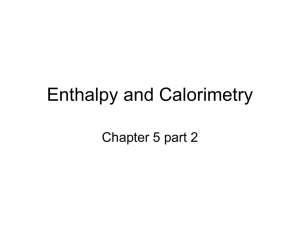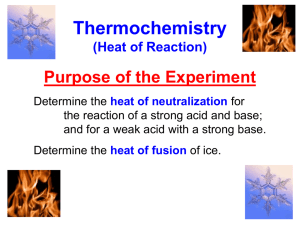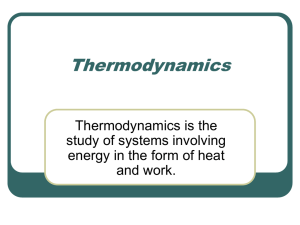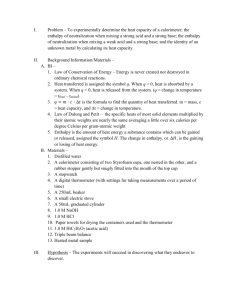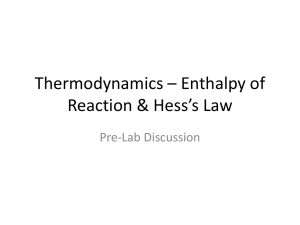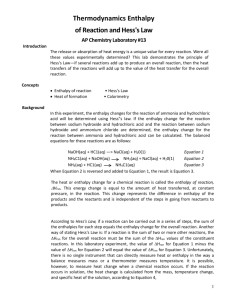lab - Mr. Walsh`s AP Chemistry
advertisement
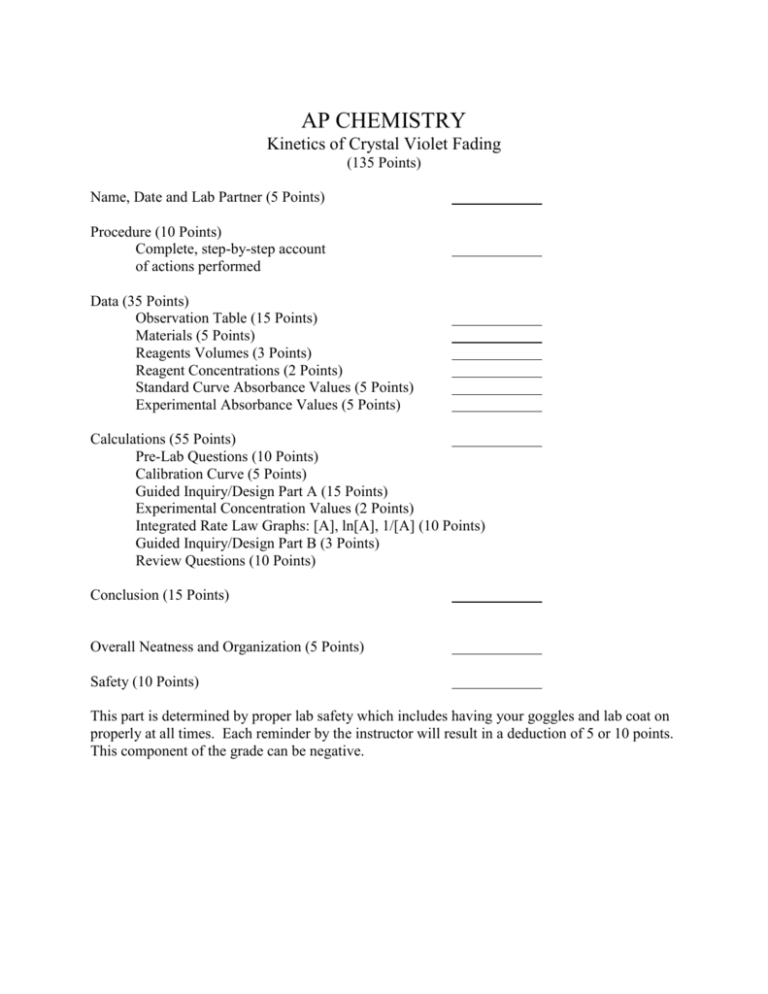
AP CHEMISTRY Kinetics of Crystal Violet Fading (135 Points) Name, Date and Lab Partner (5 Points) Procedure (10 Points) Complete, step-by-step account of actions performed Data (35 Points) Observation Table (15 Points) Materials (5 Points) Reagents Volumes (3 Points) Reagent Concentrations (2 Points) Standard Curve Absorbance Values (5 Points) Experimental Absorbance Values (5 Points) Calculations (55 Points) Pre-Lab Questions (10 Points) Calibration Curve (5 Points) Guided Inquiry/Design Part A (15 Points) Experimental Concentration Values (2 Points) Integrated Rate Law Graphs: [A], ln[A], 1/[A] (10 Points) Guided Inquiry/Design Part B (3 Points) Review Questions (10 Points) Conclusion (15 Points) Overall Neatness and Organization (5 Points) Safety (10 Points) This part is determined by proper lab safety which includes having your goggles and lab coat on properly at all times. Each reminder by the instructor will result in a deduction of 5 or 10 points. This component of the grade can be negative. __________________________________________________________________ INTRODUCTION TO ANALYTICAL CHEMISTRY – LAB __________________________________________________________________ EXPERIMENT VI KINETICS OF CRYSTAL VIOLET FADING INTRODUCTION . THEORY During physical changes, heat energy (q) is associated with the breaking and formation of intermolecular forces. The heat exchange of such processes can be mathematically described using the latent heat equation (a). q = m∆H (a) In the case of chemical reactions, heat energy (q) is associated with the breaking and formation of chemical bonds. Since there is no instrument that can directly measure heat, the flow of heat energy is quantified by observing changes in temperature of a substance in a process known as calorimetry. The relationship between temperature change and heat exchange is described mathematically using the heat capacity equation (b). q = mC∆T (b) A large amount of potential energy is contained within chemical bonds due to the force of attraction between atomic nuclei and bonding electrons. During chemical reactions, energy is required to break these forces of attraction known as chemical bonds in reactant molecules and is given off during the formation of new bonds in product molecules. Therefore, the overall flow of heat energy that occurs during the formation of a product molecule can be described by determining the energy going into the system on the reactant side versus the energy being emitted on the product side. This energy associated with product formation can be determined in a number of ways, including a summation of the bond dissociation energies in the reactant and product molecules, the summation of the enthalpy of formation for all reactants and products, or through the summation of the enthalpy of formation for step reactions. Enthalpy of formation (∆Hf) is derived from heat energy (q) values by describing the amount of energy required to form a mole of a specific molecule (units kJ/mol ). Enthalpy of formation values can be utilized to determine the overall energy requirements of a chemical reaction (∆Hrxn) (c) by comparing the amount of energy required to break up the reactant bonds and the amount of energy given off during the formation of energetically stable chemical bonds. ∆Hrxn = ∑∆Hproducts - ∑∆Hreactants (c) As enthalpy is a state function, the pathway by which a chemical process occurs has no effect on the resulting energy value. According to Hess’s Law, if a reaction can be carried out in a series of steps, the sum of the enthalpies for each step should equal the enthalpy change for the entire reaction. In other words, an algebraic combination of the enthalpy changes of multiple step reactions can lead to the enthalpy of the overall reaction. In this experiment, the enthalpy change that occurs during a reaction (∆Hrxn) between ammonia and hydrochloric acid will be investigated by experimentally determining the enthalpy of formation values for step reactions that describe the formation (∆Hf) of each reactant and product. (1) NH3 (aq) + HCl (aq) → NH4Cl(aq) It will be the role of researcher to: 1) Determine the step reactions that best describe the reaction between ammonia and hydrochloric acid to form ammonium chloride. 2) Confirm or dispute the validity of Hess’s Law by comparing the enthalpy of reaction values for the ammonia and hydrochloric acid reaction as determined via a single step reaction versus from the compilation of step reactions. 3) Experimentally determine enthalpy of formation values using the concepts of calorimetry. Safety and Disposal Strong acids and bases will be utilized during this experiment in the form of highly concentrated solutions. The ammonia and hydrochloric acid have strong odors. If you spill any on yourself, wash off the affected area with lots of water. Neutralize acid spills on the lab bench with baking soda. Neutralize base spills with vinegar (acetic acid) Research & Development 1) Determine the step reactions that could be performed in the laboratory to describe the reaction between ammonia and hydrochloric acid. The solutions you have available to react are 2.0M HCl, 2.0M NH3, 2.0M NaOH, and 2.0M NH4Cl. Write out the step reactions below (hint: only 2 step reactions are required). NH3 (aq) + HCl (aq) → NH4Cl(aq) 2) Discuss the essential characteristics of a calorimeter system and develop a model that utilizes the materials available. Include a diagram of your design. 3) Does your design a closed system? Discuss the affects this will have on your experiment and come-up with a way to mathematically account for any flaws in the calorimeter design. Investigation Prior to performing any experimentation, discuss your research and development conclusions with Mr. Walsh Calibration of the Calorimeter by Determination of its Heat Capacity 1) Assemble a calorimeter from; two nested Styrofoam cups and a cover with a small hole in it to accept a temperature probe. 2) Determine how much energy the calorimeter system looses due to imperfect insulation. Measure 50.0mL of deionized water at room temperature and transfer into the calorimeter. Gently swirl the calorimeter to agitate and mix. Record the initial temperature as accurately as possible. Heat approximately 75.0mL of deionized water to about 70°C. Measure out 50.0mL of the warm water and transfer to a different Styrofoam cup. Document the initial temperature. Immediately pour the hot water into the room temperature water in the calorimeter, cover, insert the temperature probe, swirl and record the temperature every 20 seconds for 3 minutes. Experimental Determination of Heat of Reactions 3) Determine the temperature change that occurs when 50.0mL of solutions from your first step reaction are mixed. First, measure the initial temperature of each solution separately. (Take care to rinse and dry the temperature probe completely before transferring to a new solution!) The solution temperatures should agree by +/- 0.2°C. If they do not, determine the average initial temperature. Measure out 50.0mL of the first solution and transfer it to the calorimeter. Measure out 50.0mL of the second solution and add it to the calorimeter. Quickly cover the calorimeter and insert the temperature probe. Record the temperature after 20 seconds and again every 20 seconds for 3 minutes. 4) Repeat step 3 for your second step reaction and for the overall reaction between ammonia and hydrochloric acid. DATA ANALYSIS Calculate the Heat Capacity of the Calorimeter. 1) When equal volumes of hot and cold water are combined (and there is no loss in heat energy), what would you expect the resulting temperature of the mixed water to be compared to the individual initial temperatures? 2) Was this observed during the calibration of your calorimeter? Explain. When the water samples were mixed, instantaneous final temperature could not be obtained. The solutions require a small amount of time to mix and the probe requires some time to equilibrate. The theoretical temperature that the mixture would have if the process occurred instantly can be determined from graphical extrapolation of your temperature data. 3) Plot your temperature data (y-axis) against time in seconds (x-axis). The first couple of data points may be erratic, but the following points should exhibit a linear relationship. Draw a best-fit line between these data points such that it intersects the y-axis. 4) Determine the instantaneous temperature of mixing (Tmix). 5) Calculate the average temperature (Tave) of the hot and cold water after mixing. 6) Explain the difference in Tave and Tmix. 7) Calculate the heat lost by the water (qwater) to the surroundings (calorimeter). (specific heat of water = 4.18 J/g°C) 8) Calculate the heat gained by the surroundings (calorimeter) (qcal). 9) Calculate the heat capacity of the calorimeter (Ccal), which is the heat the calorimeter absorbs each time the temperature of the water changes 1°C. (Tinitial = cold water temp) Ccal = qwater / (Tmix – Tinitial) Calculate the change in enthapy (∆H) for each reaction 10) Graph the temperature versus time for each of the three reactions tested. Extrapolate the best fit line for the linear data points to find Tmix. 11) Calculate the amount of heat evolved in each reaction (qrxn) by assuming that all of the heat is absorbed by the solutions and the calorimeter. (assume dsoln = 1.03 g/mL and Csoln = Cwater) qrxn = mCsoln∆T + Ccal∆T 12) Calculate the ∆H of the three reactions performed. Verify Hess’s Law 13) Show how the step equations should be arranged to obtain the original reaction between ammonia and hydrochloric acid. 14) Write the net ionic equations for the three reactions and show how the original reaction can be obtained algebraically from the two step reactions. 15) Find the percent error between the calculated and measured enthalpy values for the original reaction between ammonia and HCl. Conclusion Discuss the concept of calorimetry and assumptions made during this experiment. Discuss whether or not your results support Hess’s Law and any steps you would take to improve the accuracy of the experiment. Research the standard ∆H values for the reactions performed. Use them to calculate the ∆H of the reaction using Hess’s Law.
